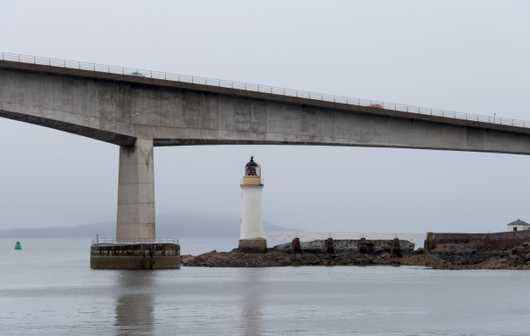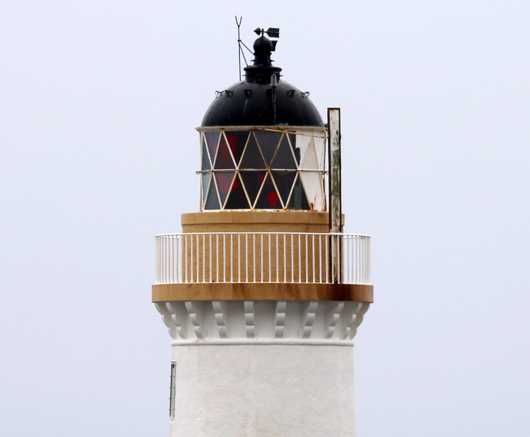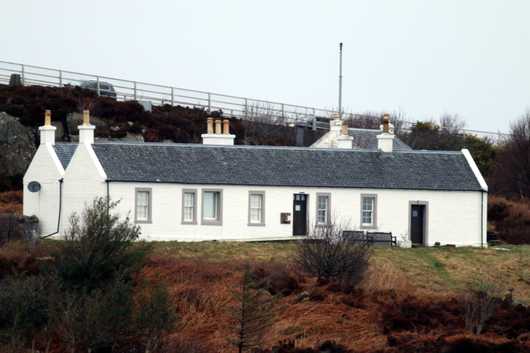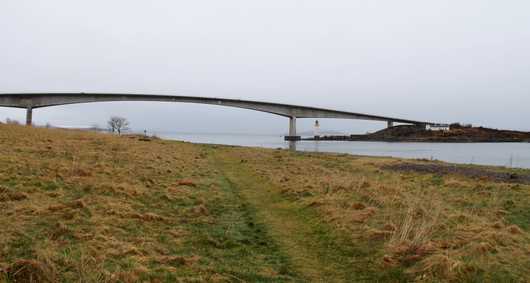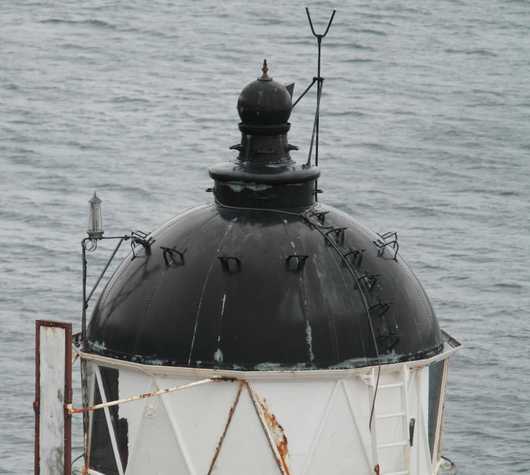Eilean Ban
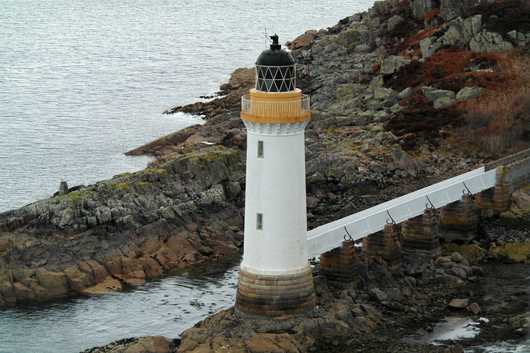
Tucked away just under the impressive Skye Bridge is the isle of Eilean Bàn, which translates to White Island. Situated in the the Northern entrance to Loch Alsh, the island lies between the Scottish Mainland and the Isle of Skye. Just a few metres off the shore of the island at it's northern end stands an impressive 21 metre high lighthouse, sometimes refered to as Kyleakin Light, but more commonly known by the name of the island itself.
Eilean Bàn Lighthouse is one of four similarly styled lighthouses that were all constructed along Scotland's West coast in 1857, marking passage between the Islands and the Mainland, along with Rona Lighthouse 22 miles to the North, Ornsay Lighthouse, only 9.5 miles to the South on the Sleat peninsular, and Rubha nan Gall, 46 miles south on the Isle of Mull. These new lighthouse greatly improved coverage on the West Coast, as aside from Lismore, Ardnamurchan, Eilean Glas and Cape Wrath lights there wasn't much in the way of navigation aid north of Oban until this point.
The lighthouse on Eilean Bàn was built to the Design of brothers David and Thomas Stevenson for the Northern Lighthouse Board. Built of stone and provided with two keeper's cottages further down the Island. Similar to it's sister light at Rubha nan Gall lighthouse, Eilean Bàn Lighthouse is built just offshore, and access to the tower via a high sided iron bridge, supported by several stone foundation piers - these are the only two lighthouses in Scotland to be reached via such a structure. The tower is painted in the usual Northern Lighthouse Board house style; the main section of the tower is white, the watch room and gallery is painted a gold/buff colour with white railings, and the lantern, made up of flat tesselating triangular panes, as well as the domed roof, ball vent and Weather vane are all painted black.
The first light installed in the Lantern in 1857 burnt sperm whale oil lamp, amplified by a Fresnel lens; This setup shone a white light with red and green sectors depending on which direction it was viewed from. 1898 saw the lamp's conversion to a paraffin light source, fueled by tanks of parafin on the island.
A further conversion came about in 1960 when the light was switched to run on acetylene gas, a much cleaner burning gas which didn't need to be permanently pressurised. With the aid of a sun valve mounted on the domed roof (Which still survives) and with the aid of a small pilot light remaining lit at all times, ready to light the main lamp, the lighthouse could be made to run automatically, turning on in hours of darkness and turning off in daylight. With the automation of this light, the cottages were suplus to the requirements of the Northern Lighthouse Board, and like with the accomodation at many of their properties, it was sold off. In 1963 the Scottish Naturalist and author Gavin Maxwell purchased the lighthouse cottages, which he moved into full-time in 1968 following a house fire at his previous address in Sandaig.
The light was discontinued in 1993, 2 years prior to the completion of the Skye Road Bridge, as the channel into Loch Alsh had by that time been marked by red and green buoys. Today the Lighthouse tower is designated as a daymark, still in use as a navigational aid, so the tower must be maintained.
Following the discontinuation of the Light, the iron bridge that connects the tower to the island became unsafe, so the Eilean Bàn Trust, who care for all the structures on the island set about raising funds for its restoration, which required the replacement of several sections of weather-worn metal. As of November 2010 major repairs that secured the safety of the walkway had been completed, and it has since been repainted. The keepers' accomodation, as well as all of the island's other buildings including the lighthouse tower are looked after by the island's trust, and the cottages are used as holiday lets.
